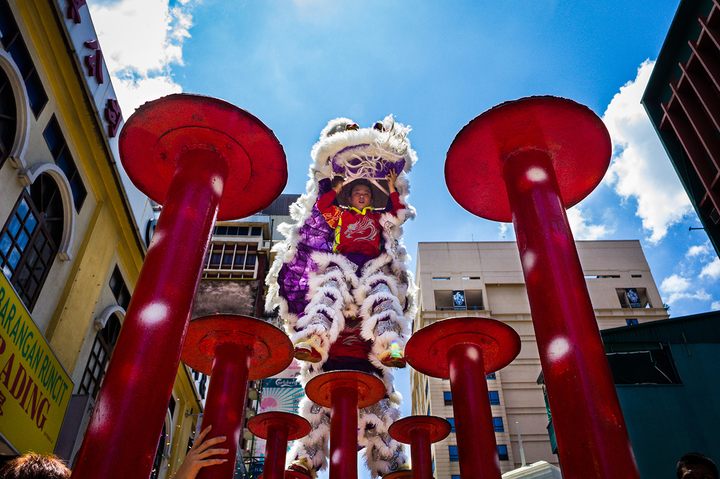
Malaysia Has Turned Lion Dancing Into a Gravity-Defying Extreme Sport
Meet some of the troupes taking an ancient tradition to new heights.
At the biannual Genting World Lion Dance Championship in Malaysia in 2018, a series of 21 poles, ranging from four to eight feet in height, lined the arena. On top of each one was a platform 12 inches in diameter. Suddenly, a pale blue Chinese lion with a white fur trim jumped up onto the stilts to the rhythm of a beating drum and clanging cymbals. Bucking its head and rearing up on its hind legs, the lion seemed to leap effortlessly between the poles—some as far as 6 feet apart. The Chinese lion dance is meant to look endearing and whimsical, but underneath the colorful costume, there were two immaculately coordinated performers who had been training in stunts and acrobatics for nearly a decade.
“As lion dancers, we always go by this motto that 10 years of practice is equal to one minute on stage,” says Calvin Zhen, who currently plays the lion head for Leung’s White Crane Dragon and Lion Dance Association, a competitive team from San Francisco. Zhen, now 24, performed as a drummer for that 2018 competition, and has been training in the sport since he was 13. “When I was a little kid my grandpa used to take me out to all the little festivals in Chinatown, just to see the lion dance and see what the culture is like,” says Zhen. “I just fell in love with the lion dance ever since.”
The lion dance is performed to ring in luck and prosperity, and is a common fixture at the Lunar New Year and other celebrations such as birthdays, weddings, or corporate events. The pantomime performance has always required a degree of style and athleticism, but over the past 30 years Chinese Malaysians have raised the stakes, turning the ancient tradition into an extreme sport. High-pole lion dancers must seamlessly jump between these tiny platforms while performing stunts and mimicking the playful nature of a lion. A single misstep—which happens frequently during competitions—could result in serious injury.

“Oh, I’ve hurt myself so many times,” says Willson Hoang, with a chuckle. Hoang is Zhen’s partner, who played the tail at the 2018 championship. Now 23, he’s been practicing the lion dance for 11 years. “But luckily I’ve never broken a bone, so I’m very grateful for that.”
The specific origins of the lion dance are hazy, but scholars believe the custom likely began during the Three Kingdoms period in China between the years 220 and 280. Emissaries from Persia and Central Asia gifted lions to the imperial court, and the popularity of the felines percolated to the common classes. Additionally, lions play a pertinent role in Buddhist mythology, which was beginning to spread in China during the first and second centuries.
“There’s different stories of how the lion dance started, but usually what we say is that the lion dance was made to chase away spirits or bad auras,” says Tony Sin, who coaches the Yuen Wei Dragon and Lion Dance Group in Malaysia and is an occasional competition judge. According to one folk legend, the dance was performed to scare away the nian, a mythical beast that terrorized Chinese villagers every winter. The lion dance joined firecrackers and the color red—said to chase off the nian as well—as part of Lunar New Year traditions held in January or February. Chinese diasporas have since spread the custom around the world, where it has changed and evolved.

Sin explains that within China, there are two main types of lions: Northern and Southern. The Northern has a shaggy red and gold coat, while the Southern comes in an array of colors and is the most common type seen on the international stage. Furthermore, the Southern style of lion dance can be subdivided into the futsan and hoksan styles. “The futsan lion comes with a sharp horn on top of the head and the mouth is U-shaped,” says Sin, while the hoksan has a rounded horn and a flat mouth. “The hoksan doesn’t look that fierce compared with the futsan, and it’s a little bit more cute,” he says. Both styles can be seen competing on the international stage.
The lion dance also has a long history associated with martial arts, as the two share many athletic stances and movements. In fact, in the first half of the 20th century, the lion dance was a way for rival martial arts schools to show off their talent. For extra flair, performers would gambol around on a jury-rigged obstacle course of stacked furniture, balance beams, or upturned vases. When the custom spread to Malaysia in the 19th century, Chinese Malaysians took the sport to new heights.
“When the lion dance seed was planted in Malaysia, we decided we had to be great at it—the best,” says Master Ho Phiew Siow (translated from Mandarin) from his workshop, where he crafts lion dance costumes. Siow, 66, is a second generation Chinese Malaysian who has been practicing the lion dance for over 40 years. He describes himself as a “guiding hand” in the development of the high-pole lion dance in Malaysia. Strolling through his workshop, lined with rattan lion head frames and partly painted costumes, Siow explains that dance was built off the martial arts traditions of jumping around improvised acrobatic arenas that sometimes included wooden stilts. Working with other lion dance aficionados in Malaysia, Siow helped standardize the performance arena with arranged metal stilts and a 10-point scoring system.
“Us Malaysians are very tenacious,” says Siow. “We wanted to make it so that people from around the world would recognize Malaysian lion dancers as the best in the world.” The first Genting World Lion Dance Championship was held in 1994, and true to Siow’s desire, a Malaysian team has won the biannual competition every time.
“We’re pretty strict with the deductions,” says Albert Fong, director of Khuan Loke Dragon & Lion Dance Association in Malaysia. Fong himself placed second as the tail dancer in the 2000 Genting competition. “A little slip gets a 0.1 deduction and can make you lose a championship, so everything is really tense for a performance.”
The 2020 competition has been postponed until further notice because of the pandemic, but in 2018, 36 teams from 16 countries competed. More recently, the International Lion Dance Federation has also updated the series of stilts to resemble the Chinese character wang, meaning “king,” with three parallel rows transected by one long line.
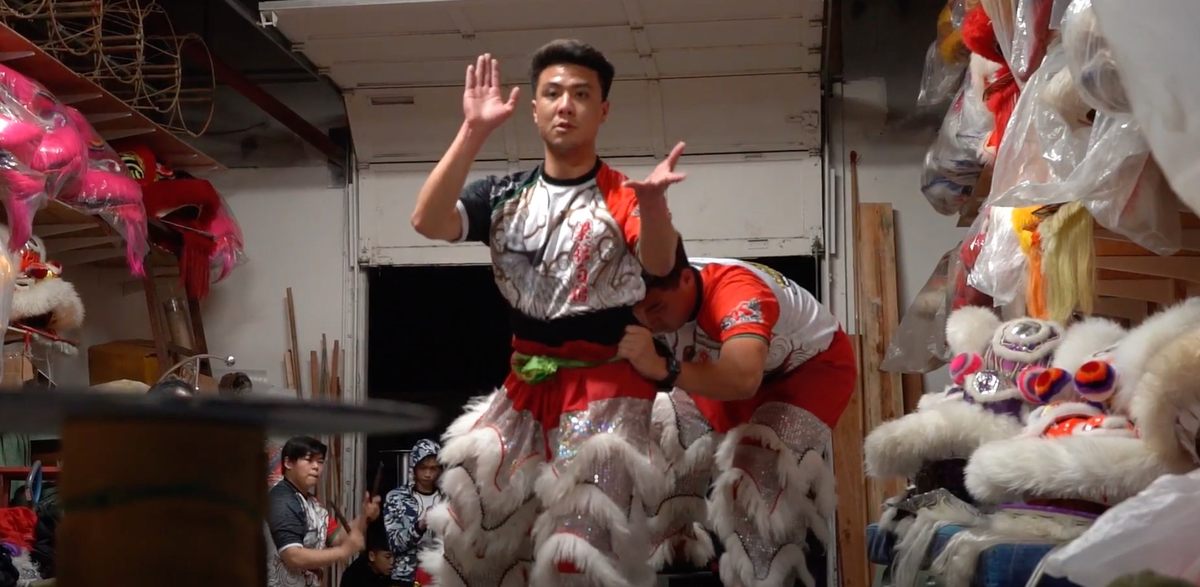
“Once we find out the set-up we try to choreograph a lion dance with a storyline and a routine,” says Zhen. Their 2018 performance featured an oceanic theme, with the lion picking a fabric fish out of a bucket and tossing it around with its mouth.
In order to be competition-ready, Zhen’s team, Leung’s White Crane, comprising the two lion dancers and five musicians, practice between three and five times a week, for three to six hours a go.“The more you can get in the better,” he says.
The poles differ in height by eight inches, so training begins by setting up shorter stilts to get used to hopping the distance between the poles. “We get muscle memory of the distance we need to jump,” says Zhen. First, Zhen and Hoang cultivate this muscle memory individually, and then practice the movements in coordination. Once the pair can confidently move between poles, they can start working on the stunts. In order to impress the judges, they need to prepare 10 different kinds of stunts, including ones they’ve invented themselves.
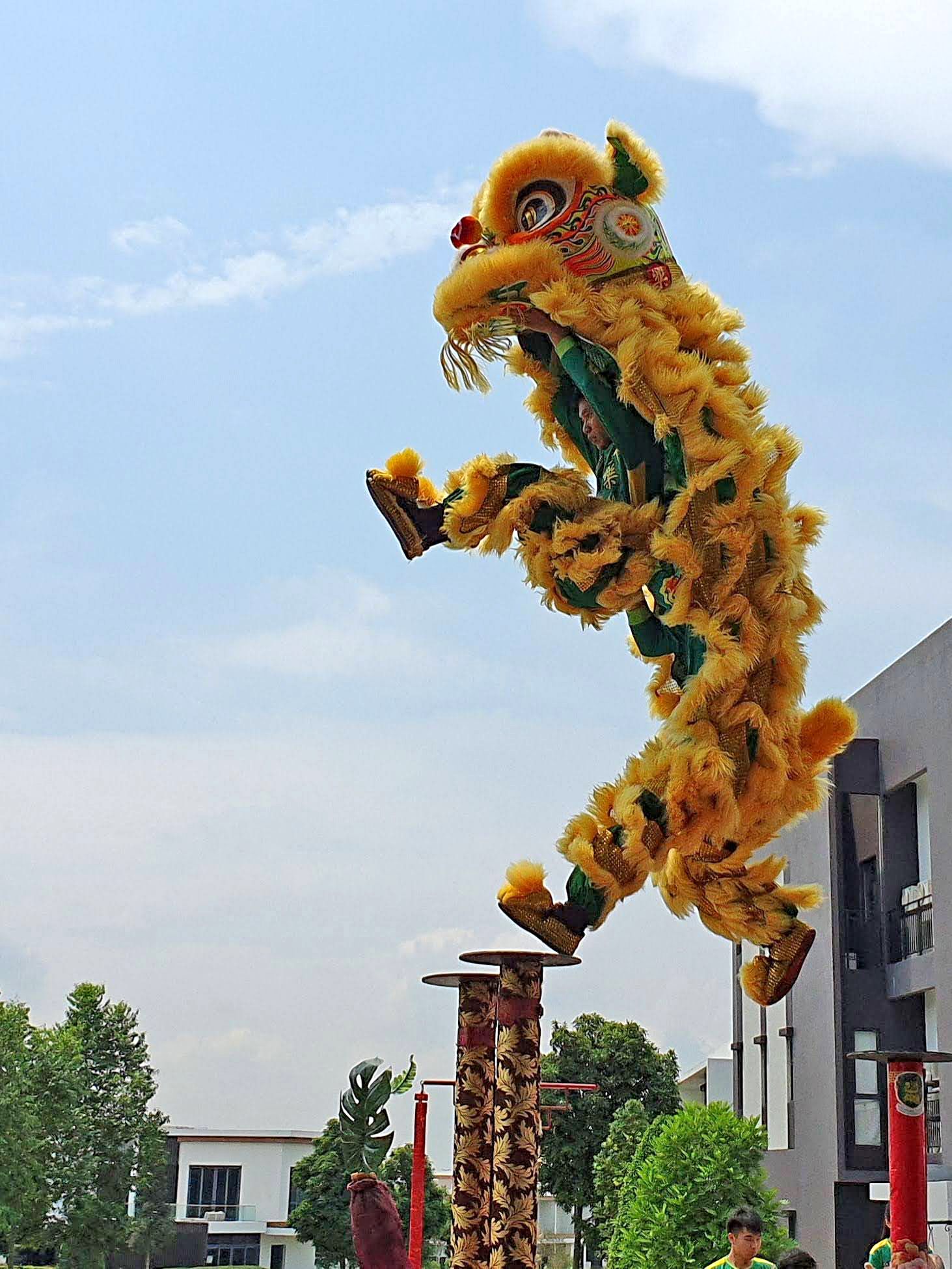
In one type of move, a “double stack” Hoang hoists Zhen onto his head by the hips, while leaping ahead across the stilts. In other moves, the team has to perform synchronized jumps backwards—difficult because Hoang and Zhen can’t see where they’re going. “The hardest part I think is getting the timing down between the two partners that are jumping,” says Zhen.
In fact, it was a slight lapse in timing that led to Hoang and his partner slipping off the poles and onto the blue safety mats during the 2018 competition. “We were just really disappointed in the moment,” says Hoang, as the slip cost the team a whole point. “But if it wasn’t for mistakes how would you learn?” Luckily, neither was hurt and, with the audience cheering them on, Hoang and his partner dusted themselves off, climbed back onto the poles, and finished the show.
Despite the performance setback, the Leung’s White Crane team believes their best is yet to come. Zhen and Hoang are dreaming of a top three in the Genting World Championship, whenever the next one takes place. “It’s like the Olympics for lion dance,” says Hoang.
Back home in California, the pair share a common desire for the dance to be more popular in their communities, and for people to take it seriously as a competitive sport. “It’s a way for us Asian people to connect with our culture,” says Hoang, who is Vietnamese-American. “I feel like our job is to keep it alive.”
Cultural preservation and a drive for excellence are common themes spanning continents and generations. “It’s the same no matter where you are in the world,” says Siow, “You have to preserve the best parts of your culture. If everyone comes together to do this, I believe if it’s good today, it’ll be even greater tomorrow.”


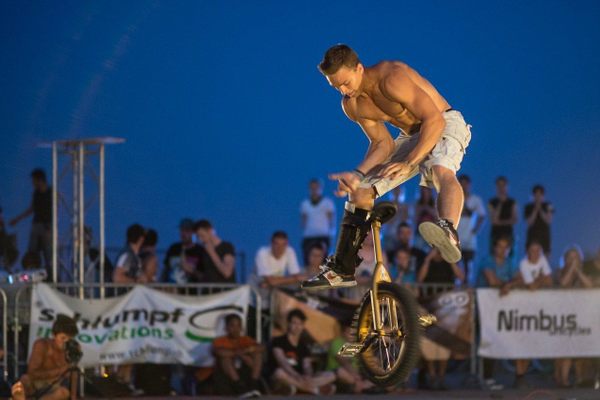







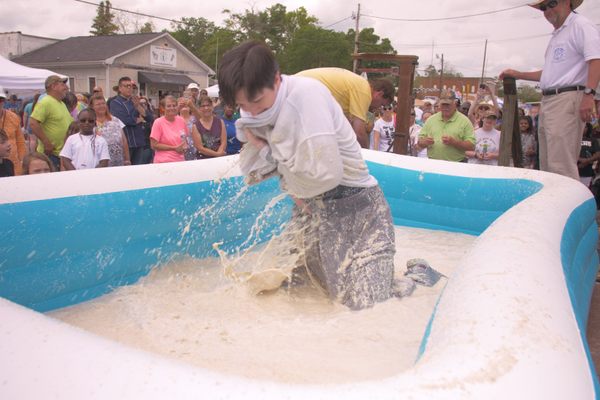







Follow us on Twitter to get the latest on the world's hidden wonders.
Like us on Facebook to get the latest on the world's hidden wonders.
Follow us on Twitter Like us on Facebook